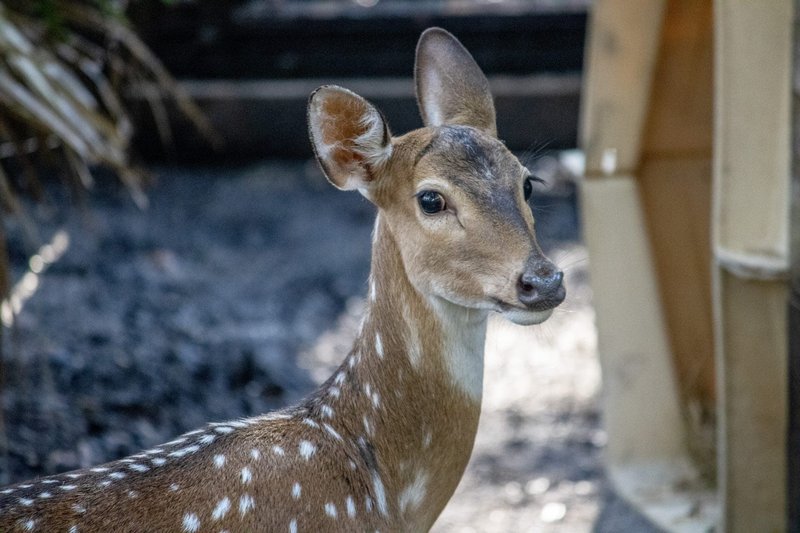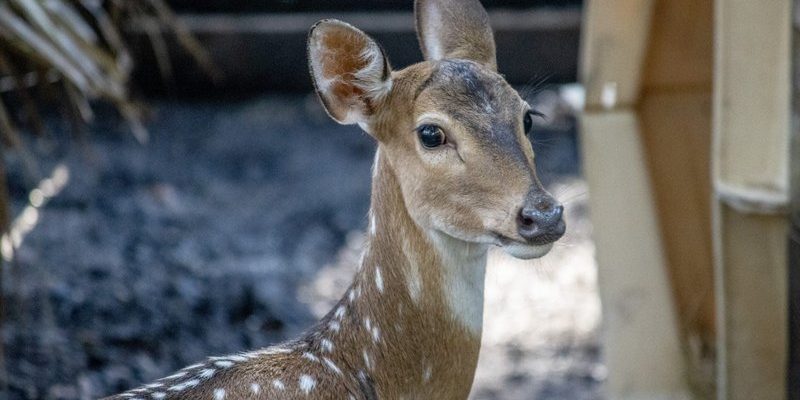
So, what’s their secret? It’s all about clever adaptations and a bit of finesse. Fallow deer are not just surviving; they’re flourishing in various environments, from woodlands to open fields, even when faced with challenging conditions. Let’s explore the unique ways these graceful creatures manage to endure and adapt to tough situations. Think of it as a survival guide but for deer!
Physical Adaptations That Aid Survival
Fallow deer sport distinctive features that help them thrive in difficult conditions. For starters, their spotted fur provides excellent camouflage amid the dappled sunlight filtering through trees. This natural concealment aids them in hiding from predators like wolves and foxes. Additionally, their physical size plays a significant role in their survival. While not the largest deer species, fallow deer are agile and can swiftly maneuver through thick brush. This agility allows them to escape predators effectively.
Another vital aspect of their physical makeup is the presence of strong legs. These legs are made for speed and endurance, allowing fallow deer to cover large distances quickly when searching for food or fleeing danger. Their hooves are also uniquely designed, providing traction on varied terrains. This is particularly important when the environment gets tricky, like during heavy rain or snowfall, as it helps them maintain stability.
Finally, their body structure supports a robust digestive system that allows them to process a wide range of vegetation. This is a game-changer in harsh environments, where food sources can be limited. With the ability to consume tough grasses, leaves, and even bark, fallow deer can sustain themselves in conditions where others might starve.
Social Behavior and Adaptation
Here’s the thing: survival isn’t just about physical attributes. Fallow deer also rely on their social structures to thrive. They are typically found in small groups called “herds,” which play a critical role in their survival. Being part of a herd offers protection. When danger looms, deer can warn each other using alert calls or body language. This social interaction helps them spot threats much sooner than if they were alone.
Moreover, their herding behavior helps them find food more efficiently. By moving together, they can graze on grass or forage for leaves more effectively, ensuring that every member finds enough to eat. You might say they’re like a team of foragers, each looking out for the others while working together to thrive.
During harsh winters when food is sparse, fallow deer will often form larger groups, which can increase their chances of survival. This collective approach not only consolidates their efforts but also creates a social buffer against the cold. They can huddle together for warmth and support during those chilly nights.
Adaptability to Seasonal Changes
Fallow deer are incredibly adaptable, particularly when it comes to seasonal changes. As the seasons shift, so do their behaviors and habitats. In spring and summer, these deer tend to move to more open areas where plenty of fresh grass and foliage is available. This allows them to take advantage of the nutrient-rich foods that are abundant during these warmer months.
However, as autumn rolls in, they often migrate to wooded areas where they can find shelter from harsh winds and rain. During this time, they shift their diets to include more bark, twigs, and other vegetation that’s available. This ability to adapt their diet is crucial. Without this flexibility, they’d struggle to survive the colder months when fresh grass is buried under snow.
Interestingly, fallow deer also exhibit seasonal changes in behavior. For example, during the winter months, they become more cautious and reclusive, spending time in safer, secluded areas. This change in activity levels helps them conserve energy during times when food is scarce, showcasing just how strategic they can be.
The Role of Habitat in Survival
The environment where fallow deer live plays a vital role in their survival. They often inhabit mixed woodlands, parklands, and grasslands. These areas provide both shelter and food, which are crucial for maintaining their health. Being in a habitat with diverse vegetation means they have access to various food sources, which is key when one type may be less available.
Moreover, their habitat choice is not just random. Fallow deer are known to select areas that offer ample cover from predators. Dense underbrush and thickets can provide hiding spots, while open fields allow them to escape quickly if necessary. It’s this balance between safety and food availability that helps them thrive.
In addition to the physical features of their environment, seasonal changes can also impact their habitat. During harsh winters, the availability of food can decline sharply, prompting deer to seek out areas that offer better resources. They often follow migratory paths to where food is more plentiful, showcasing their adaptability to changes in their surroundings.
How Fallow Deer Manage Water Needs
Access to water is another critical factor in survival, especially in harsh environments. Fallow deer can be pretty resourceful when it comes to fulfilling their hydration needs. They often seek out water sources such as rivers, streams, and lakes, but they can also obtain moisture from the vegetation they eat. This is particularly useful when water sources are scarce or frozen over during the winter.
Interestingly, fallow deer have flexible hydration strategies. When it rains, they might take advantage of puddles or damp ground to drink, ensuring they stay hydrated even when traditional water sources are limited. During hot, dry spells, they’ve been known to travel considerable distances to find water, highlighting their determination to survive.
Their ability to adapt to varying conditions also extends to their physiological needs. Fallow deer can tolerate small amounts of dehydration better than some other animals. This is a vital survival trait, especially when resources are limited, allowing them to thrive in environments where water might not always be readily available.
Predator Awareness and Escape Tactics
Living in a harsh environment isn’t just about finding food and water; it also means dealing with predators. Fallow deer have an acute awareness of their surroundings and can sense danger long before it becomes a problem. They rely on keen eyesight and hearing to detect threats, often standing still and listening intently for any sign of danger.
When it comes to escaping, these deer have several tactics up their sleeves. One of the most effective strategies is their ability to blend into their surroundings. Remember that stunning spotted fur? It’s not just for show; it helps them camouflage in the natural environment, making it harder for predators to spot them.
If escape becomes necessary, fallow deer are excellent sprinters. They can run at impressive speeds, zigzagging to evade predators like wolves or humans. This agility and speed are crucial, especially in forested areas where obstacles abound. Their instinct to flee first and ask questions later is an essential part of their survival toolkit.
The Importance of Conservation for Fallow Deer Survival
As we learn about how fallow deer survive, it’s essential to acknowledge the impact that conservation efforts have on their well-being. Environmental changes, habitat loss, and hunting can threaten their populations. Conservation programs aim to protect their habitats and manage their populations sustainably.
Efforts to educate communities about the importance of preserving natural environments also play a role in helping these deer thrive. Creating protected areas ensures that fallow deer have safe places to live without the threat of habitat destruction or human encroachment. These initiatives not only benefit fallow deer but also support other wildlife and overall ecosystem health.
In addition, supporting biodiversity is crucial. When various plant species are preserved, fallow deer have access to different food sources, which is vital for their adaptation to changing conditions. This highlights how interconnected our ecosystems are and the integral role each species plays in maintaining balance.
In conclusion, the survival of fallow deer in harsh environments is a fascinating interplay of physical adaptations, behavioral strategies, and environmental factors. By understanding these remarkable creatures, we gain insight into the resilience of nature and the delicate balance that sustains all life. Let’s continue to appreciate and protect these beautiful animals, ensuring they thrive for generations to come.

